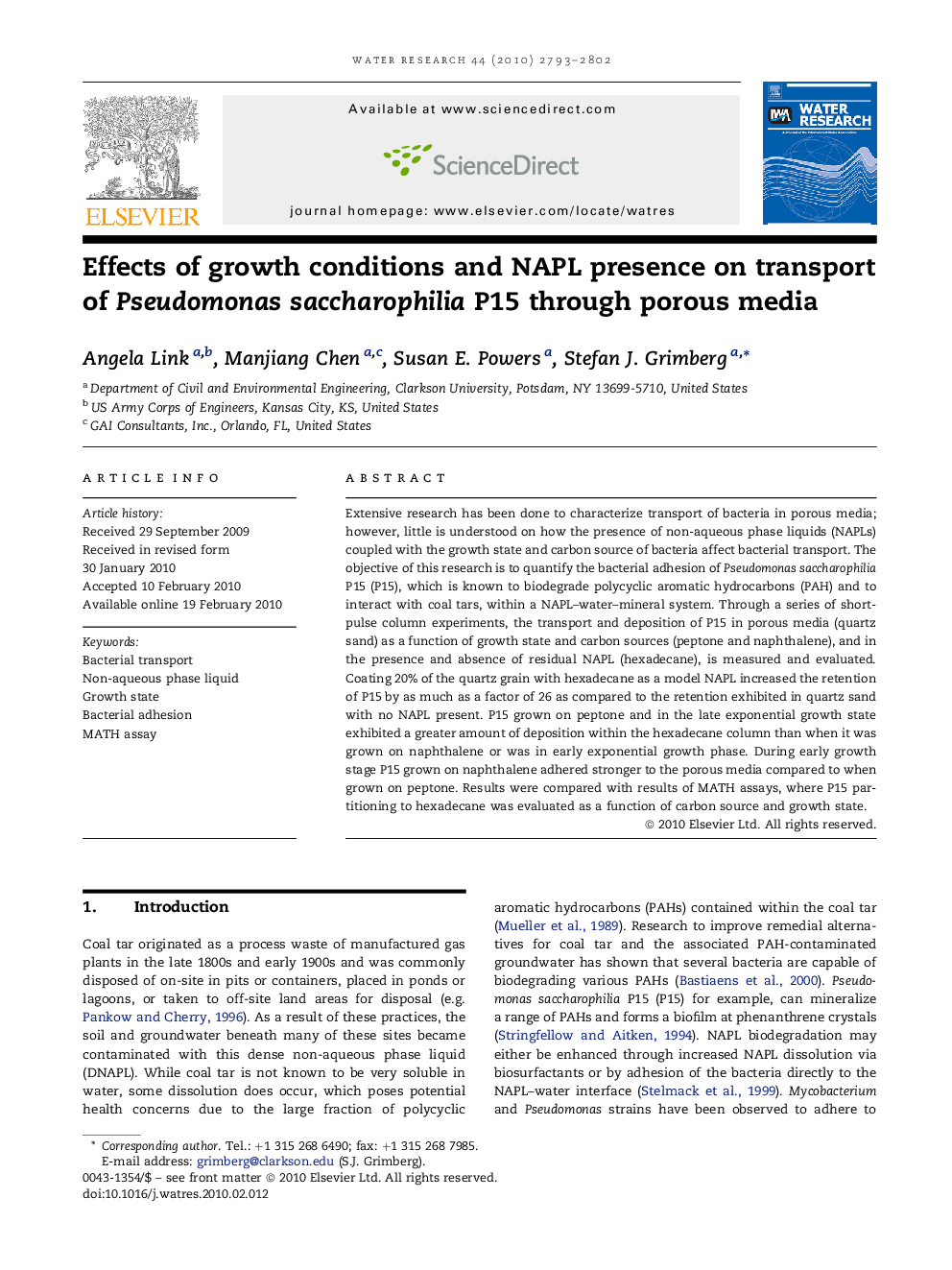| Article ID | Journal | Published Year | Pages | File Type |
|---|---|---|---|---|
| 4484216 | Water Research | 2010 | 10 Pages |
Extensive research has been done to characterize transport of bacteria in porous media; however, little is understood on how the presence of non-aqueous phase liquids (NAPLs) coupled with the growth state and carbon source of bacteria affect bacterial transport. The objective of this research is to quantify the bacterial adhesion of Pseudomonas saccharophilia P15 (P15), which is known to biodegrade polycyclic aromatic hydrocarbons (PAH) and to interact with coal tars, within a NAPL–water–mineral system. Through a series of short-pulse column experiments, the transport and deposition of P15 in porous media (quartz sand) as a function of growth state and carbon sources (peptone and naphthalene), and in the presence and absence of residual NAPL (hexadecane), is measured and evaluated. Coating 20% of the quartz grain with hexadecane as a model NAPL increased the retention of P15 by as much as a factor of 26 as compared to the retention exhibited in quartz sand with no NAPL present. P15 grown on peptone and in the late exponential growth state exhibited a greater amount of deposition within the hexadecane column than when it was grown on naphthalene or was in early exponential growth phase. During early growth stage P15 grown on naphthalene adhered stronger to the porous media compared to when grown on peptone. Results were compared with results of MATH assays, where P15 partitioning to hexadecane was evaluated as a function of carbon source and growth state.
